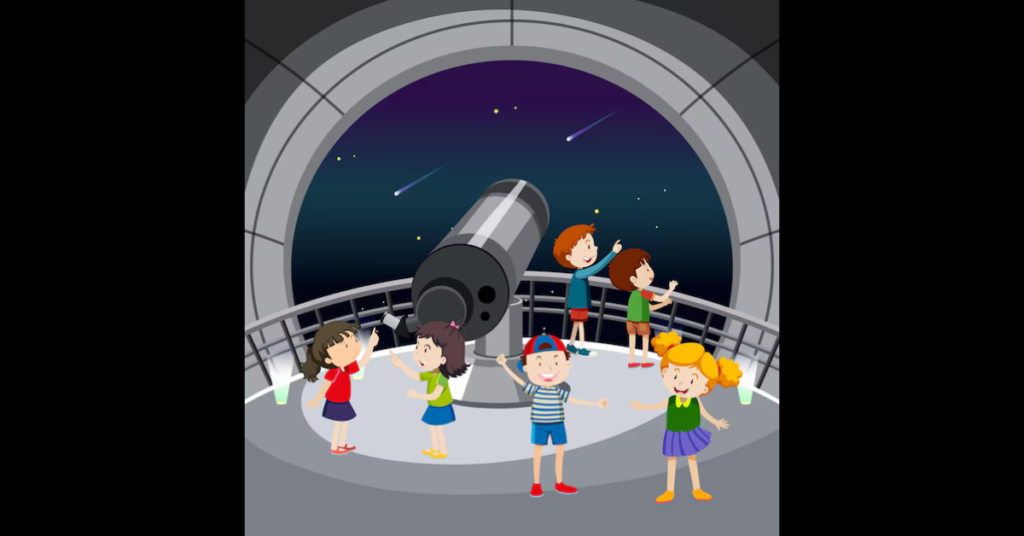The concept of “incubation theory” often surfaces in discussions surrounding creativity and innovation, particularly in how ideas develop and evolve over time. When applied to the realm of space exploration and technology, this theory takes on a new dimension, offering insights into how space agencies, research institutions, and private enterprises foster groundbreaking advancements. This article delves into the “Incubation Theory of Space,” examining its implications for space exploration, the development of space technology, and the future of human activity in outer space.
Understanding Incubation Theory
To appreciate the application of incubation theory to space exploration, it’s crucial first to understand the theory itself. Incubation theory is primarily associated with creativity and problem-solving. It posits that ideas and solutions often emerge after a period of unconscious processing, during which the mind continues to work on a problem or concept outside of direct awareness.
Key Concepts of Incubation Theory
- Unconscious Processing: According to incubation theory, during periods of rest or distraction, the unconscious mind continues to process information, leading to sudden insights or creative breakthroughs.
- Problem Re-structuring: Incubation can lead to the reorganization of information and ideas, allowing individuals to approach problems from new perspectives.
- Delay and Insight: The theory suggests that a delay in problem-solving can sometimes facilitate greater creativity and more effective solutions, as it allows for the maturation of ideas.
Applying Incubation Theory to Space Exploration
When applied to space exploration, incubation theory provides a framework for understanding how space agencies and organizations develop and implement innovative technologies and solutions. Space exploration often involves complex, long-term projects where ideas need time to evolve and mature.
Historical Context and Development
The application of incubation theory in space exploration can be traced through the evolution of major space programs and missions. Historical examples illustrate how long-term projects and incremental developments often lead to significant breakthroughs in technology and understanding.
1. The Apollo Program
NASA’s Apollo program is a prime example of how incubation theory plays out in space exploration. The Apollo missions, particularly Apollo 11’s successful moon landing in 1969, were the result of years of research, development, and problem-solving. The initial idea of landing on the moon was supported by years of technological advancements, research, and development. During the intervening years, many aspects of the mission were refined and improved, demonstrating how incubation of ideas and technology led to successful outcomes.
2. The International Space Station (ISS)
The ISS represents another significant example. Its development involved years of international collaboration, design iteration, and technological advancement. The project benefited from a period of incubation where ideas about space habitats, international cooperation, and long-term space missions were developed and refined. The ISS’s success is a testament to the power of incubation in evolving and maturing complex concepts.
The Role of Incubation in Modern Space Agencies
Modern space agencies, such as NASA, ESA, and Roscosmos, employ incubation theory in their approach to space exploration and technology development. These agencies often have dedicated research and development programs designed to foster innovation and creativity.
NASA’s Innovation Ecosystem
NASA’s innovation ecosystem includes various programs and initiatives that embody the principles of incubation theory. For example:
- NASA’s Innovative Advanced Concepts (NIAC) Program: This program supports early-stage research and development of advanced technologies that have the potential to revolutionize space exploration. By funding high-risk, high-reward projects, NIAC allows ideas to mature and develop over time, following the principles of incubation theory.
- Technology Demonstration Missions: NASA often launches technology demonstration missions to test new technologies and concepts in space. These missions provide valuable data and insights, allowing ideas to evolve and improve before they are used in more critical applications.
Private Sector Involvement
The private sector plays an increasingly significant role in space exploration. Companies such as SpaceX, Blue Origin, and Boeing are applying incubation theory principles in their approach to developing new technologies and capabilities.
- SpaceX’s Development Process: SpaceX’s iterative development approach, including rapid prototyping and testing, aligns with incubation theory. By continuously refining and testing new technologies, SpaceX allows ideas to mature and evolve, leading to significant advancements in space technology.
- Blue Origin’s Long-Term Vision: Blue Origin’s focus on building reusable rocket technology and its long-term vision for space colonization reflect the incubation of ideas over extended periods. The company’s approach involves ongoing research and development, allowing concepts to mature gradually.
The Impact of Incubation Theory on Space Technology
The impact of incubation theory on space technology is evident in several key areas, including propulsion systems, life support technologies, and space habitats.
Propulsion Systems
The development of advanced propulsion systems, such as ion thrusters and nuclear propulsion, exemplifies the incubation of ideas over time. These technologies have undergone years of research and development, benefiting from incremental improvements and refinements.
- Ion Thrusters: Ion thrusters, which use electric fields to accelerate ions and generate thrust, have been in development for decades. The technology has evolved through various stages of research and testing, demonstrating how incubation theory applies to propulsion system advancements.
- Nuclear Propulsion: Nuclear propulsion systems represent a long-term vision for deep-space exploration. Research into nuclear thermal and nuclear electric propulsion has been ongoing for many years, reflecting the gradual maturation of ideas and technologies.
Life Support Technologies
Life support technologies are crucial for long-duration space missions. The development of these systems involves extensive research and testing to ensure they can sustain human life in space.
- Closed-Loop Life Support Systems: Closed-loop systems, which recycle air and water to minimize resource usage, have evolved over time through iterative development. The incubation of ideas and technologies has led to significant improvements in the efficiency and reliability of these systems.
- Advanced Radiation Protection: Research into radiation protection technologies, such as advanced shielding materials and biological countermeasures, has been ongoing for decades. The gradual development and refinement of these technologies reflect the principles of incubation theory.
Space Habitats
The design and development of space habitats, including the ISS and future lunar and Martian habitats, involve extensive research and iteration.
- Habitat Design: The design of space habitats requires a deep understanding of human needs and environmental conditions in space. The development process involves testing and refining concepts to ensure they can support human life effectively.
- Sustainability and Resource Management: The development of sustainable habitats involves research into resource management, recycling, and waste reduction. The incubation of ideas in these areas contributes to the creation of more efficient and livable space environments.
Challenges and Future Directions
While incubation theory provides valuable insights into the development of space technology, it also presents challenges and opportunities for the future.
Balancing Innovation and Risk
One challenge is balancing the desire for innovation with the risks associated with new technologies. Incubation theory suggests that allowing ideas to mature over time can lead to breakthroughs, but it also requires managing risks and uncertainties associated with high-risk projects.
- Risk Management: Effective risk management strategies are essential for ensuring that innovative technologies are developed safely and successfully. This involves thorough testing, validation, and contingency planning.
Fostering Collaboration
Collaboration between space agencies, private companies, and international partners is crucial for advancing space exploration. The principles of incubation theory emphasize the importance of collaborative efforts in nurturing and developing ideas.
- International Collaboration: International collaboration on space missions and research projects can enhance the incubation of ideas and facilitate the sharing of resources and expertise. Collaborative efforts can lead to more rapid advancements and innovations.
Long-Term Vision and Investment
A long-term vision and investment in space exploration are essential for realizing the potential of incubation theory. Sustained investment in research and development, combined with a commitment to long-term goals, can drive progress and innovation.
- Investment in Research: Continued investment in space research and development is critical for advancing technologies and achieving future exploration goals. This includes funding for basic research, technology development, and mission planning.
Conclusion
The Incubation Theory of Space provides a valuable framework for understanding how space exploration and technology development evolve over time. By examining the principles of incubation theory and their application to space exploration, we gain insights into the processes that drive innovation and progress in this field.
From historical examples like the Apollo program to modern initiatives by space agencies and private companies, the incubation of ideas and technologies plays a crucial role in advancing our understanding of space and expanding our capabilities. As we look to the future of space exploration, the principles of incubation theory will continue to guide and inspire new developments, driving us toward new frontiers and discoveries.
Whether through incremental advancements or groundbreaking breakthroughs, the journey of space exploration reflects the power of incubation theory in shaping our understanding of the universe and pushing the boundaries of human achievement.







